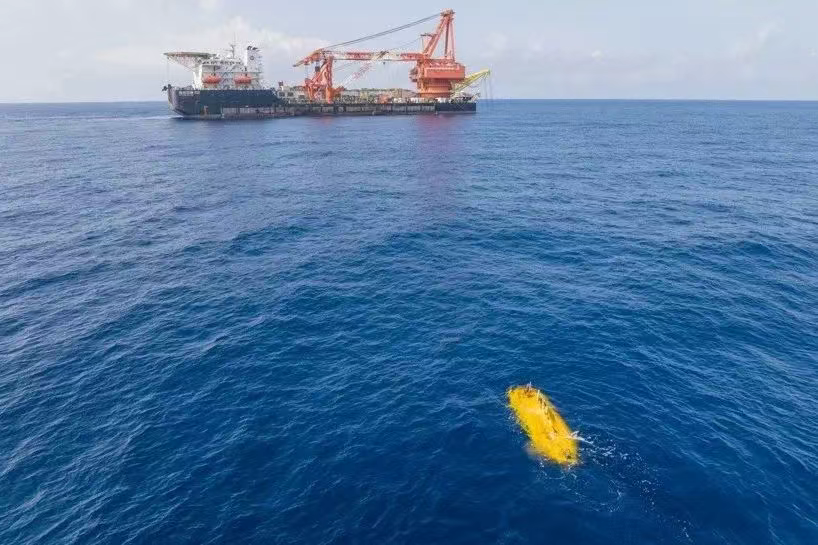Recently, the “Haiwei” system, China’s first indigenously developed intelligent monitoring system for deep-water subsea pipeline laying, spearheaded by COOEC, concluded sea trials in the waters of Hainan province.

The operational performance of its pivotal technological components, including a high wave-resistant Unmanned Surface Vessel (USV), an Autonomous Underwater Vehicle (AUV), and optical communication systems, demonstrably met all design specifications. This system utilizes intelligent monitoring methodology for deep-water subsea pipeline laying, integrating an Unmanned Surface Vessel (USV), an Autonomous Underwater Vehicle (AUV) endowed with remote operational capabilities, signal repeaters, and advanced optical communication.
 The “Haiwei” system is a major scientific and technological research project undertaken by COOEC. This system comprises an Unmanned Surface Vessel (USV), an Autonomous Underwater Vehicle (AUV) with remote operation capabilities, signal repeaters, and optical communication equipment, and is designed for an operational depth of up to 1500 meters.
The “Haiwei” system is a major scientific and technological research project undertaken by COOEC. This system comprises an Unmanned Surface Vessel (USV), an Autonomous Underwater Vehicle (AUV) with remote operation capabilities, signal repeaters, and optical communication equipment, and is designed for an operational depth of up to 1500 meters.
Key among its components is the “Guardian”, China’s first 18-meter class Unmanned Surface Vessel specifically designed for deep-water pipeline laying monitoring. Operating as a surface base station, the “Guardian” supplies power and control signals to the subsea repeaters and optical communication systems. Another integral element is the “Navigator”, China’s first independently developed 1500-meter class deep-water Autonomous Underwater Vehicle (AUV) with remote operation capabilities.
This system boasts a current resistance capability of 3 knots and an operational endurance of up to 10 days. The “Navigator” is capable of autonomously identifying and tracking high-definition touchdown points (TDPs), seamlessly transmitting this data to the command center via underwater wireless optical communication.The system’s critical core components have undergone multiple high-pressure endurance tests, achieving a Touchdown Point (TDP) recognition accuracy rate of up to 95%.


